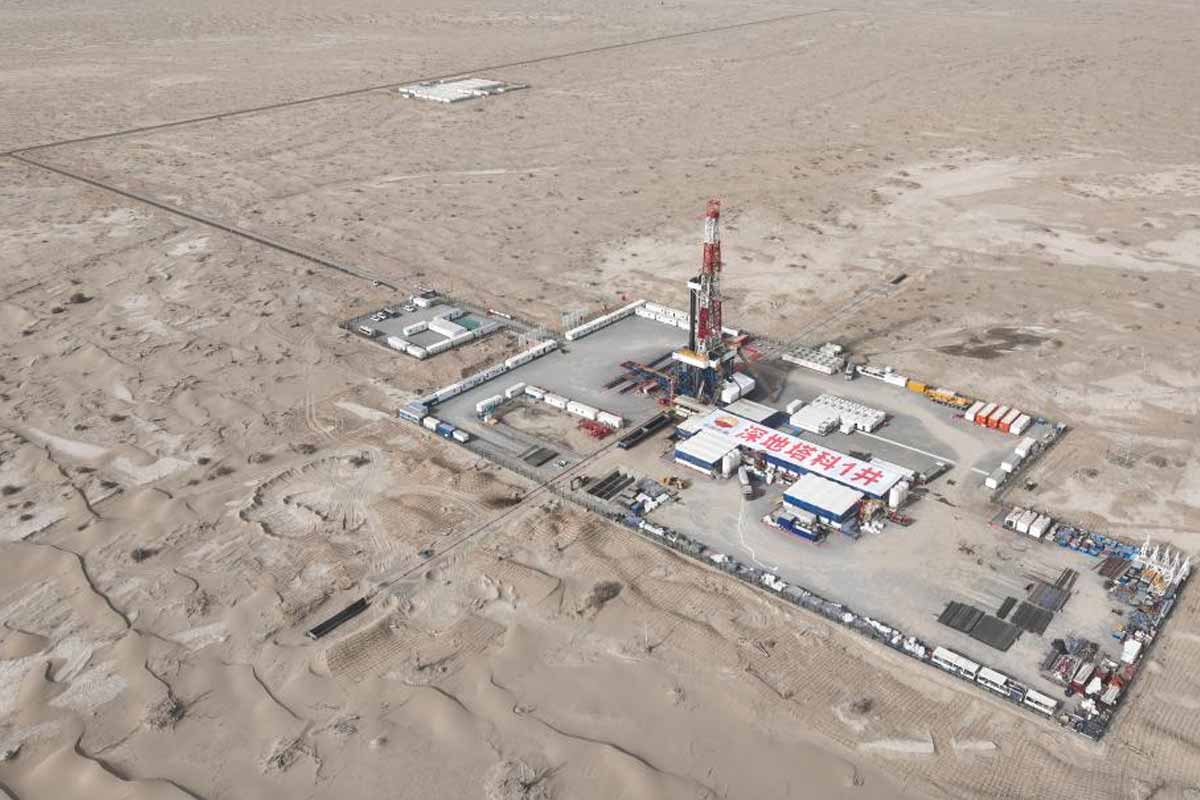China deep drilling has a way of grabbing your attention. Imagine a borehole diving eleven kilometers through the Taklamakan’s stubborn sands. It’s brave, a little wild, and sharply focused on answers we don’t yet have. I can’t shake the feeling we’re watching a new chapter open under our feet.
A hole into deep time
The project starts in the Tarim Basin, where dunes move like a slow ocean. Engineers plan to reach 11,100 meters, chasing rock laid down before birds sang. Core by core, they’ll map layers dating to the Cretaceous and beyond. This isn’t chest beating for a record book. It’s a chance to read the planet’s diary with fresh, ungloved fingers. Geologists expect to cross about ten continental strata on the way down. They don’t aim for the mantle, but they’ll press deeper than most. Think of thirty three Eiffel Towers, stacked tip to base in the dark.
What comes up will challenge tidy diagrams and polished conference slides. Some ideas hold, some crumble, and that’s the fun of real science. This is where China deep drilling steps from bold headline into hands-on discovery. The desert watches, hot wind scraping the rigs like sandpaper across steel. Maps will redraw, and textbooks will get new wrinkles in their margins. Students will circle fresh names on strat charts pinned above cluttered desks. That ripple begins with a single clean core on a quiet morning.
China deep drilling
Going that far down punishes every moving part. Temperatures are expected near 200 degrees Celsius, which cooks seals and fatigues steel. Pressure climbs like a bear on your back, relentless and heavy. Downhole pressure can near 1,300 atmospheres, enough to test every seam. Engineers rolled in roughly 2,000 tons of gear, and every bolt earns its keep. Drill bits get hardfaced and swapped before they cry uncle. Pipes thicken, joints lock, and sensors babysit the string like hawks. Sun Jinsheng once called it like driving a heavy truck on two steel cables. The line wiggles, and your cargo flips.
Russia learned this pain at Kola, where machines failed and plans reset. Five boreholes, countless fixes, and a trench full of lessons. Teams in Xinjiang study every hiccup, wanting smoother days at the rig floor. They call that focus grit, and China deep drilling gives them reasons to believe. You can feel the pride in small victories, like a clean meter gained. Mud weight dances within a tight window to keep the hole calm. Too heavy, you fracture rock; too light, the well kicks back. Every choice echoes thousands of meters below where eyes cannot follow.
Surprises waiting in the core
Deep holes have a habit of rewriting what we thought we knew. Kola pulled microfossils at six kilometers, tiny ghosts sealed in ancient mud. Water pockets turned up, along with hydrogen that shouldn’t have been there. Every core said, be humble. This new well may whisper similar surprises from its narrow throat. Geologists will test mineral grains, trapped fluids, and the scars of ancient stress. The energy team watches too, eyes on possible hydrocarbons in tight reservoirs. A new field here could change the region’s economy and its roads. Pipes, rail, and small towns grow around steady production like vines on trellis. Meanwhile, the science links to bigger puzzles, including climate and deep carbon.
Rising CO₂ numbers remind us the ground and sky keep talking. China deep drilling adds fresh data to that conversation, meter by hard-won meter. No one knows what the next sample will say until it breathes air. Maybe a mineral phase appears that theory only sketched in pencil. Maybe trapped gases hint at deep reactions still ticking like clocks. Either way, the story thickens with each hiss of released pressure.
Science, energy, and responsibility
Big tools make big footprints, and the team knows it. The schedule runs about 450 days, which tests budgets and patience. Desert ecosystems bruise easily, so the work must tread lighter each week. Waste, noise, and dust get tracked like line items on a ledger. Better fluids, tighter casings, and cleaner power make a real difference. If extraction follows, the same mindset must stick. Take what you need, leave less scar, and keep listening. Public trust doesn’t travel in trucks; it walks in on foot. Publish the data, invite oversight, and show your work like a craftsman.
That openness shields the project from rumor and sleepless nights. It also reminds the world that China deep drilling serves more than bragging rights. When knowledge grows, safer methods follow, and accidents grow rarer. You feel the stakes in every handoff between shifts at midnight. Local crews get trained, paid well, and sent home safe. Good projects leave people better than they arrived. That yardstick matters as much as depth measured on the console.
What this means for tomorrow
The tools built here won’t retire when this hole reaches depth. They’ll travel to other deserts, oceans, and maybe other worlds. Harsh places teach lessons that tame labs can’t offer. NASA keeps bumping into surprises on Mars, rewriting the planet’s early story. When rovers sniff organics or map old riverbeds, drilling methods suddenly look universal. You can see a straight line from this rig to a Martian pit. Sensors tuned for heat and pressure will serve far from Earth. Samples will come up, and someone will gasp in a quiet lab. That’s the romance of hard science, even when budgets feel cold.
We chase mystery with wrenches, math, and a little faith. In that spirit, China deep drilling reads like a letter to the future. It says, we’re ready to dig, learn, and share what we find. It also admits we’re nervous, because the unknown always asks for nerves. Still, eyes stay bright, and the bit keeps turning. Industry will borrow these tricks for geothermal, carbon storage, and safer wells. Universities will chase grants, design sensors, and pack students onto dusty buses. Someone young will see a drillsite and decide, this is my road.
